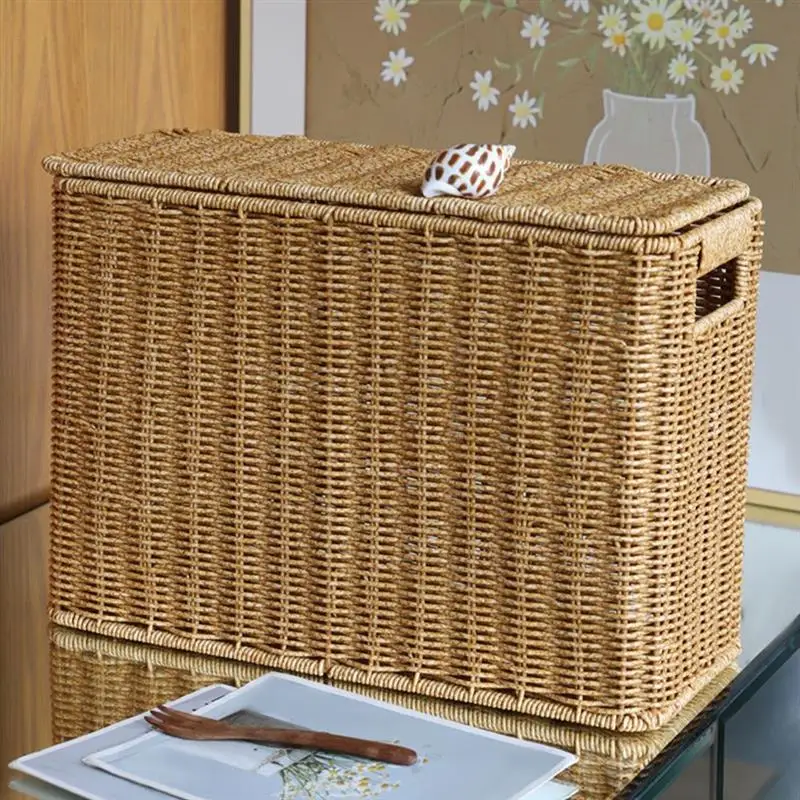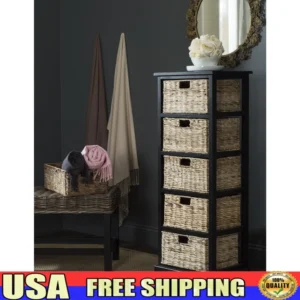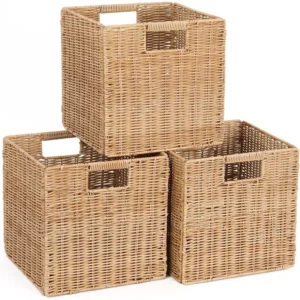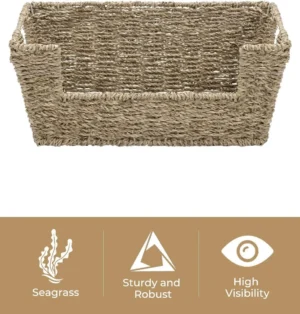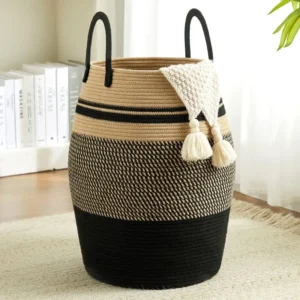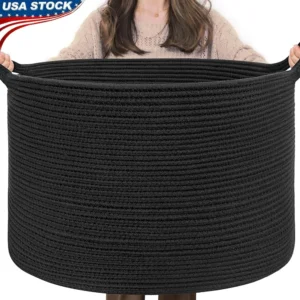Introduction
Rattan has become a beloved material in modern home design, bringing warmth and texture to everything from statement furniture pieces to decorative storage baskets. This natural material, derived from climbing palm species, adds an organic element that many homeowners crave in their living spaces. However, as the popularity of rattan has grown, so has the market for synthetic alternatives that mimic its appearance.
For consumers, one of the biggest challenges lies in distinguishing between natural rattan and its synthetic counterparts (often called poly-rattan). This distinction matters significantly—affecting not just the look and feel of your purchase but also its durability, maintenance requirements, environmental impact, and overall value.
In this comprehensive guide, we’ll explore reliable methods to identify whether that beautiful rattan piece you’re considering is natural or synthetic. You’ll learn visual and tactile identification techniques, understand the key differences between these materials, and discover which option might better suit your specific needs. Understanding the differences between natural wicker vs synthetic can help you make more informed purchasing decisions for your home.
What is Natural Rattan?
Natural rattan is a climbing palm plant belonging to the Calameae tribe, native to tropical regions across Africa, Asia, and Australia. Unlike bamboo, which grows as a hollow stalk, rattan is a solid stem that can reach lengths of up to 600 feet in the wild, though most commercial rattan comes from stems between 7-10 feet long.
The journey from jungle to furniture begins when harvesters cut mature rattan stems, which are then stripped of their outer skin, dried in the sun, and treated with sulfur to prevent fungal growth. Craftspeople then steam the rattan to make it pliable before bending and shaping it into furniture and decorative items.
Natural rattan possesses several distinctive characteristics:
- Flexibility with strength: Rattan can be bent into curves without breaking yet maintains impressive structural integrity
- Lightweight construction: Despite its strength, rattan remains surprisingly light, making furniture easy to move
- Natural variations: Each piece features subtle differences in color, grain, and texture, ensuring no two items are identical
- Porous surface: The material naturally absorbs and releases moisture, adapting to its environment
From an environmental perspective, responsibly harvested rattan represents a sustainable choice. As a fast-growing renewable resource, rattan can reach maturity in just 5-7 years. Traditional rattan-producing countries like Indonesia, the Philippines, and Malaysia have established sustainable harvesting practices to protect this valuable resource. The principles of eco-friendly wicker basket materials highlight why natural options remain popular despite synthetic alternatives.
What is Synthetic Rattan?
Synthetic rattan (also known as poly-rattan, PE rattan, or resin wicker) emerged in the furniture market during the late 1990s as manufacturers sought to create weather-resistant alternatives to natural materials. This engineered product is made from various polymers including polyethylene (PE), high-density polyethylene (HDPE), polypropylene (PP), and occasionally polyvinyl chloride (PVC).
The manufacturing process involves extruding these plastic materials through dies that create strands resembling natural rattan fibers. These synthetic strands are then woven around aluminum or steel frames in patterns that mimic traditional rattan weaving techniques.
Synthetic rattan offers several distinctive properties:
- Weather resistance: Unlike natural rattan, synthetic versions withstand rain, snow, and intense sunlight without deteriorating
- Uniform appearance: Each strand maintains consistent coloration and thickness throughout the piece
- Low maintenance: Typically requires only occasional cleaning with soap and water
- UV stability: Better-quality versions contain UV inhibitors to prevent fading and brittleness from sun exposure
From an environmental standpoint, synthetic rattan presents a mixed picture. While it’s made from petroleum-based plastics, higher-quality versions are often recyclable at the end of their life cycle. Additionally, their longevity means they may need replacement less frequently than natural alternatives in challenging environments.
The growing popularity of synthetic rattan has prompted many comparisons between traditional and modern materials. Our guide to synthetic vs natural wicker explores these differences in depth, helping you understand which might be right for your needs.
Visual Identification Methods
One of the most practical ways to distinguish between natural and synthetic rattan is through careful visual inspection. By knowing what to look for, you can often identify the material even when shopping online or viewing items from a distance.
1. Color Consistency
Natural rattan: Displays subtle variations in color tone throughout the piece, with gradual transitions from lighter to darker areas. Even when stained, the natural grain and color variations remain visible.
Synthetic rattan: Exhibits uniform coloration across the entire piece. The color appears perfectly consistent, sometimes with an unnaturally perfect appearance.
2. Surface Texture and Fiber Appearance
Natural rattan: Shows visible natural fibers running longitudinally along the strands. You’ll notice small imperfections, nodes, and organic patterns on the surface.
Synthetic rattan: Presents a smoother, more uniform texture. While high-quality synthetic rattan may include manufactured “grain” patterns, these typically appear more regular and repeating than natural variations.
3. End Cuts and Joints
Natural rattan: At cut ends or joints, you’ll see the fibrous structure of the material, similar to cut wood. These ends may be slightly irregular or show the porous core.
Synthetic rattan: Cut ends appear clean and often slightly melted or sealed. The interior is solid and uniform rather than fibrous.
4. Weaving Patterns and Irregularities
Natural rattan: Hand-woven natural rattan typically shows slight variations in the tightness and alignment of the weave. These small “imperfections” are actually signs of authentic craftsmanship.
Synthetic rattan: Machine-woven synthetic pieces display highly regular, precise weaving patterns with consistent spacing and tension throughout.
5. Core Visibility
Natural rattan: In some areas, particularly where pieces bend or join, you may see the inner core of the rattan exposed, which has a different appearance than the outer layer.
Synthetic rattan: Maintains the same appearance throughout with no distinction between “core” and outer layer since it’s the same material all the way through.
Understanding the durability differences between materials can help you better recognize visual clues that distinguish synthetic from natural options.
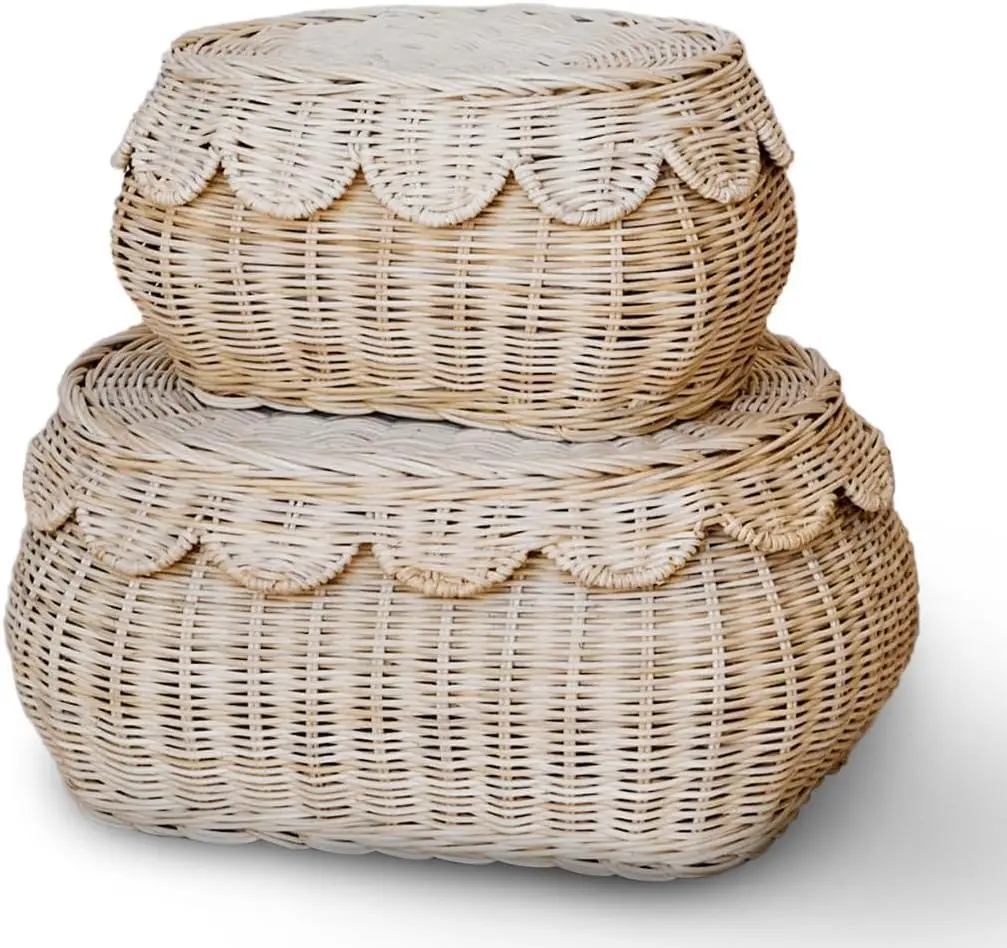
Tactile Identification Methods
When you have the opportunity to physically interact with a rattan piece, tactile tests provide some of the most reliable methods for distinguishing between natural and synthetic materials.
1. The Touch Test
Natural rattan: Feels warm and organic to the touch, with a slightly textured surface that’s pleasant against the skin. It may have small raised areas where fibers run through the material.
Synthetic rattan: Often feels cooler to the initial touch and has a distinctly plastic-like smoothness, even when manufacturers add texture to mimic natural rattan.
2. The Flexibility Test
Natural rattan: When gently pressed, natural rattan yields slightly but offers resistance, then returns to its original shape. It has an organic springiness.
Synthetic rattan: Depending on quality, synthetic rattan may feel either more rigid (in lower-quality versions) or more flexible (in higher-quality types) than natural rattan. The response to pressure often feels more mechanical than organic.
3. The Weight Test
Natural rattan: Generally feels lightweight yet substantial. A natural rattan chair typically weighs less than a similarly sized synthetic piece due to the natural material’s hollow structure.
Synthetic rattan: Usually weighs more than its natural counterpart because of the denser plastic materials and heavier frame typically required for structural support.
4. The Temperature Test
Natural rattan: Quickly adapts to the ambient temperature and doesn’t retain heat or cold for long. In outdoor settings, natural rattan won’t become uncomfortably hot in sunshine.
Synthetic rattan: Tends to retain temperature longer. On hot days, synthetic rattan furniture left in the sun can become quite hot to the touch.
5. The Sound Test
Natural rattan: When lightly tapped, produces a softer, more hollow sound, similar to wood.
Synthetic rattan: Makes a more plastic-like sound when tapped, often slightly higher-pitched or harder-sounding than natural rattan.
When making your selection between materials, these tactile differences can be crucial. Our guide on how to choose between synthetic natural wicker provides additional insights into making this important decision.
Advanced Testing Methods
For situations where visual and tactile tests haven’t provided conclusive results, several advanced testing methods exist. However, these should be approached with extreme caution as they can potentially damage the item. Ideally, these tests should only be performed on inconspicuous areas or on small samples if available.
The Water Test
Natural rattan: Being a natural plant fiber, genuine rattan readily absorbs moisture. Apply a tiny droplet of water to an inconspicuous area and observe:
– Natural rattan will absorb the droplet within seconds
– The area may darken slightly before drying
– After drying, there might be a slight mark or texture change
Synthetic rattan: Repels water almost entirely:
– Water beads up on the surface
– Absorption is minimal or non-existent
– No color change occurs when wet
The Burn Test (EXTREME CAUTION)
This test should only be performed on a detachable small piece or sample, never on the actual furniture, and with appropriate fire safety precautions.
Natural rattan: When exposed to flame:
– Burns similar to wood
– Produces white or gray smoke
– Creates ash
– Smells like burning wood or paper
Synthetic rattan: When exposed to flame:
– Melts rather than burns cleanly
– Produces black or greenish smoke
– Forms melted blobs rather than ash
– Emits a chemical, plastic smell
The Bend Test
For this test, apply gentle pressure to a part of the material that would reasonably be expected to have some flexibility.
Natural rattan: When bent:
– Offers initial resistance
– May make slight creaking sounds
– Returns to shape when pressure is released
– In extreme cases, breaks rather than permanently deforms
Synthetic rattan: When bent:
– Either too rigid or too flexible compared to natural rattan
– Makes no sound when bent
– May permanently deform rather than returning completely to original shape
For valuable or antique pieces, these destructive tests are not recommended. Instead, consulting experts or examining natural rattan baskets elevating home aesthetics can provide insights into authentic material characteristics without risking damage.
Comparative Features: Natural vs. Synthetic Rattan
| Feature | Natural Rattan | Synthetic Rattan |
|---|---|---|
| Weather Resistance | Poor-to-moderate; susceptible to mold and mildew in humid environments | Excellent; designed specifically for outdoor use |
| UV Tolerance | Fades and becomes brittle with prolonged sun exposure | Good to excellent, depending on quality of UV inhibitors |
| Maintenance | Regular cleaning, occasional resealing, keep dry | Simple washing, minimal maintenance |
| Lifespan | 5-10 years indoors; significantly shorter outdoors | 7-15+ years with proper care, even outdoors |
| Environmental Impact | Renewable, biodegradable resource | Petroleum-based product, potentially recyclable |
| Cost | Generally higher initially | Often less expensive initially, better value long-term for outdoor use |
| Weight | Lighter | Typically heavier |
| Temperature Sensitivity | Comfortable in varying temperatures | Can become hot in direct sunlight |
| Repair Potential | Can be repaired by skilled craftspeople | Limited repair options when damaged |
| Aging Appearance | Develops character and patina | May look worn or faded rather than acquiring character |
This comparison highlights why environment and usage factors are so critical when choosing between natural and synthetic rattan. For detailed information on maintaining either material type, our guide on how to clean wicker baskets provides essential care instructions.
Best Uses for Natural Rattan
Natural rattan excels in specific environments where its organic qualities can shine while its vulnerability to the elements is minimized:
- Climate-controlled indoor spaces: Living rooms, bedrooms, and dining areas where humidity remains moderate and consistent
- Protected areas: Covered porches, sunrooms, or conservatories that offer protection from direct rain and moisture
- Low-traffic zones: Areas that won’t subject the rattan to excessive physical stress or frequent contact with liquids
- Design-focused settings: Spaces where the authentic, warm appearance of natural materials is paramount to the overall aesthetic
Natural rattan particularly complements these design styles:
* Bohemian and eclectic interiors
* Tropical and coastal themes
* Mid-century modern spaces
* Japanese and Scandinavian minimalism
* Traditional and vintage-inspired rooms
The organic texture and warmth of rattan baskets make them perfect additions to spaces where natural materials are emphasized and appreciated.
Best Uses for Synthetic Rattan
Synthetic rattan provides exceptional performance in challenging environments where natural rattan would quickly deteriorate:
- Outdoor living spaces: Patios, decks, balconies, and garden areas exposed to the elements
- Wet areas: Pool surrounds, outdoor dining spaces, and areas subject to frequent cleaning
- Commercial settings: Restaurants, hotels, and public spaces with high traffic and intensive cleaning regimens
- Vacation properties: Second homes or rental properties that may experience periods of neglect or inconsistent maintenance
Synthetic rattan works particularly well with these design approaches:
* Contemporary outdoor living
* Modern minimalist spaces
* Commercial hospitality settings
* Family-friendly environments
* Maritime and lakeside properties
The durability and weather resistance of wicker storage trunks made from synthetic materials make them ideal for outdoor storage solutions in variable weather conditions.
Price Differences and Value Considerations
When evaluating the price difference between natural and synthetic rattan, consider these factors that influence both initial cost and long-term value:
Price Factors
- Material quality: Higher-grade natural rattan and better-quality synthetic materials command premium prices
- Construction complexity: Intricate weaving patterns and design details increase cost regardless of material
- Brand reputation: Established brands typically charge more but may offer better quality assurance
- Sustainable harvesting: Ethically sourced natural rattan often costs more than mass-produced alternatives
Long-term Value Assessment
- Initial investment: Natural rattan typically costs 15-30% more initially than comparable synthetic pieces
- Replacement frequency: Synthetic rattan may offer better value for outdoor settings as it won’t require replacement as frequently
- Resale potential: Well-maintained natural rattan often retains value better, particularly if it’s a recognized design
- Maintenance expenses: Consider the cost of protective treatments and covers for natural rattan versus the minimal maintenance needs of synthetic options
For budget-conscious shoppers, rattan storage baskets offer an affordable entry point to either material, allowing you to experience the differences before investing in larger furniture pieces.
Care and Maintenance Comparison
Natural Rattan Care
- Regular dusting: Use a soft brush attachment on your vacuum or a microfiber cloth weekly
- Cleaning: Wipe with a slightly damp cloth; never soak or saturate
- Moisture management: Keep away from humid environments and direct water contact
- Sun protection: Avoid prolonged direct sunlight which causes fading and brittleness
- Rejuvenation: Apply boiled linseed oil or specialized rattan oil annually to maintain flexibility
- Mold prevention: Ensure good air circulation and use dehumidifiers in damp conditions
- Winter care: Indoor storage is ideal; if not possible, use breathable furniture covers
Synthetic Rattan Care
- Regular cleaning: Hose down or wipe with soapy water as needed
- Stain removal: Most stains can be removed with mild dish soap and water
- Pressure washing: Low-pressure settings can be used occasionally (check manufacturer recommendations)
- Winter storage: While not strictly necessary, covering or storing in extreme weather prolongs life
- Frame care: Pay attention to metal frames which may need protection from rust
- UV protection: Apply 303 Aerospace Protectant or similar annually for UV protection
The dramatic difference in maintenance requirements explains why many consumers choose synthetic options for convenience, while others prefer the unique character of natural rattan despite the additional care needed.

Black Wicker Baskets, Rattan Storage Baskets, Tall Wicker Baskets, Wicker Shelf Baskets, Woven Storage Baskets
5-Tier Distressed Black Wood Frame Storage Tower with Removable Wicker Baskets for Home Organization$715.80 Select options This product has multiple variants. The options may be chosen on the product pageWicker Laundry Baskets, Woven Laundry Baskets, Woven Storage Baskets
$392.02 Select options This product has multiple variants. The options may be chosen on the product pageRattan Shelf Baskets, Rattan Storage Baskets, Small Wicker Baskets, Square Wicker Baskets
Square Plastic Wicker Storage Baskets Set of 3 with Collapsible Design for Cube Storage Organization$185.47 Select options This product has multiple variants. The options may be chosen on the product pageWicker Baskets with Handles, Wicker Storage Baskets, Woven Storage Baskets
$137.92 Select options This product has multiple variants. The options may be chosen on the product pageLarge Wicker Laundry Baskets, Tall Wicker Baskets, Woven Laundry Hampers, Woven Storage Baskets
$130.54 Select options This product has multiple variants. The options may be chosen on the product pageWicker Blanket Baskets, Woven Laundry Baskets
$89.60 Select options This product has multiple variants. The options may be chosen on the product page
How Retailers May Misrepresent Rattan Products
As you shop for rattan items, be aware of potentially misleading marketing tactics:
- Ambiguous terminology: Phrases like “rattan-effect,” “rattan-style,” or “rattan-look” indicate synthetic materials mimicking natural rattan
- Partial material disclosure: Some retailers mention only the natural components while downplaying synthetic elements
- Misleading photography: Images may be filtered to make synthetic rattan appear more natural or textured than it actually is
- Vague material descriptions: Watch for descriptions that emphasize appearance over material composition
To protect yourself as a consumer, ask these specific questions when shopping:
1. “Is this made from natural rattan or synthetic/poly-rattan?”
2. “What percentage of the visible weaving is natural material versus synthetic?”
3. “What is the core material/frame made from?”
4. “What specific type of synthetic material is used?” (PE, HDPE, PVC, etc.)
Reputable retailers like Tidy Treasure will provide clear information about material composition without hesitation. Our wicker storage baskets collection clearly identifies the materials used in each product to ensure transparency.
FAQs About Rattan Identification
Can natural and synthetic rattan be used together in one piece?
Yes, many manufacturers combine both materials—often using natural rattan for decorative elements and synthetic rattan for structural components. Check product descriptions carefully for terms like “mixed media” or “composite construction.”
Is “PE rattan” better than other synthetic rattans?
Generally yes. Polyethylene (PE) rattan is considered superior to PVC versions as it’s more flexible, durable, and environmentally friendly. High-density polyethylene (HDPE) represents the highest quality in synthetic rattan.
Can I refinish or paint natural rattan?
Yes, natural rattan can be refinished, stained, or painted. However, proper preparation is essential—the surface must be thoroughly cleaned and may require light sanding. Use products specifically designed for rattan or wicker.
Can synthetic rattan be repaired if damaged?
Minor repairs are possible using heat techniques to melt broken ends together. Major damage often requires replacing entire sections, which can be difficult to match perfectly to the original.
What is the difference between wicker and rattan?
“Wicker” refers to the weaving technique, while “rattan” is a specific material. Wicker items can be made from rattan, but also from other materials like reed, bamboo, synthetic fibers, or even paper.
How long should quality rattan furniture last?
With proper care, natural rattan furniture can last 10-20 years indoors. Quality synthetic rattan should remain serviceable for 7-15 years, even in outdoor conditions. Our wicker baskets lids collection demonstrates the durability of well-made rattan products.
Making the Right Choice for Your Needs
When deciding between natural and synthetic rattan, consider these key factors:
Location: Where will the item be used? Indoor controlled environments favor natural rattan, while outdoor or humid spaces demand synthetic options.
Weather exposure: Items regularly exposed to sun, rain, or humidity will last significantly longer in synthetic materials.
Aesthetic priority: If authentic natural appearance and patina development matter most to you, natural rattan is worth the extra care requirements.
Maintenance willingness: Be honest about how much maintenance you’re willing to perform—synthetic rattan requires far less attention.
Environmental values: Consider what matters more to you—a renewable, biodegradable natural resource or a potentially longer-lasting synthetic that might reduce replacement frequency.
By carefully evaluating these factors against your specific needs, you’ll be able to choose the right type of rattan for your home and lifestyle. Whether you select natural or synthetic, understanding the material helps ensure you get the quality and performance you expect from your purchase.
The wicker baskets in our collection represent both material types, allowing you to compare and choose based on your specific requirements and preferences.

